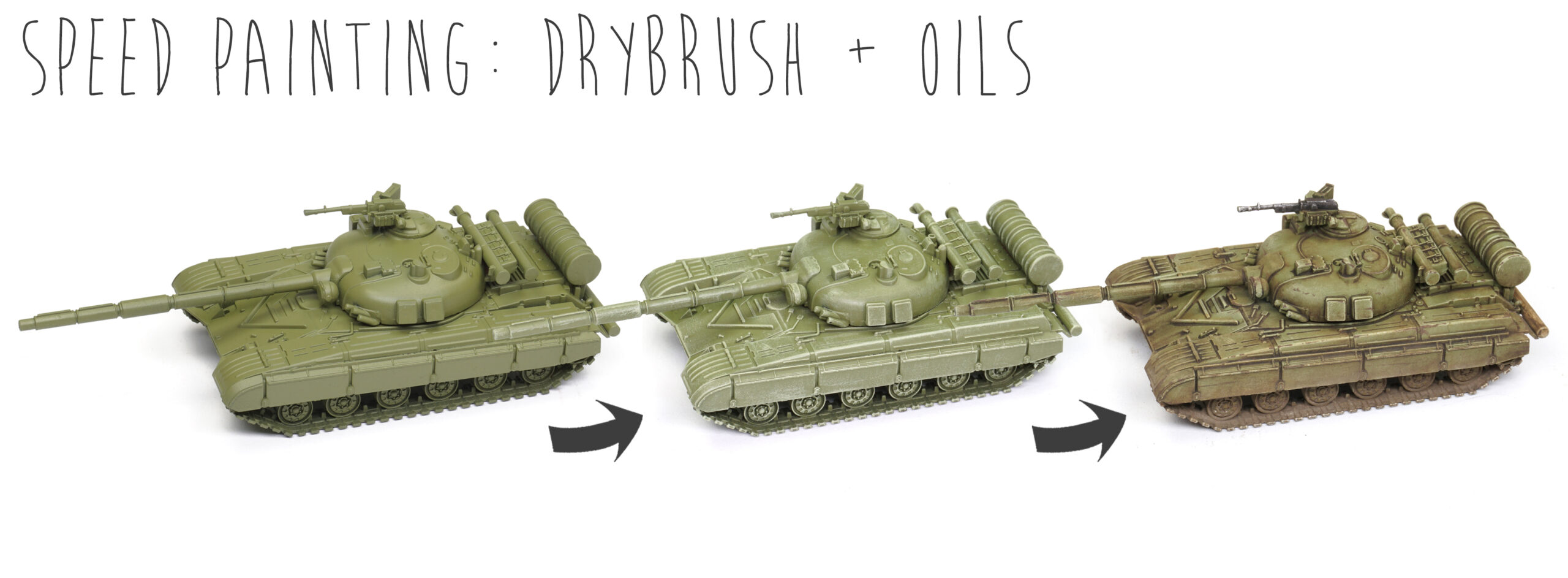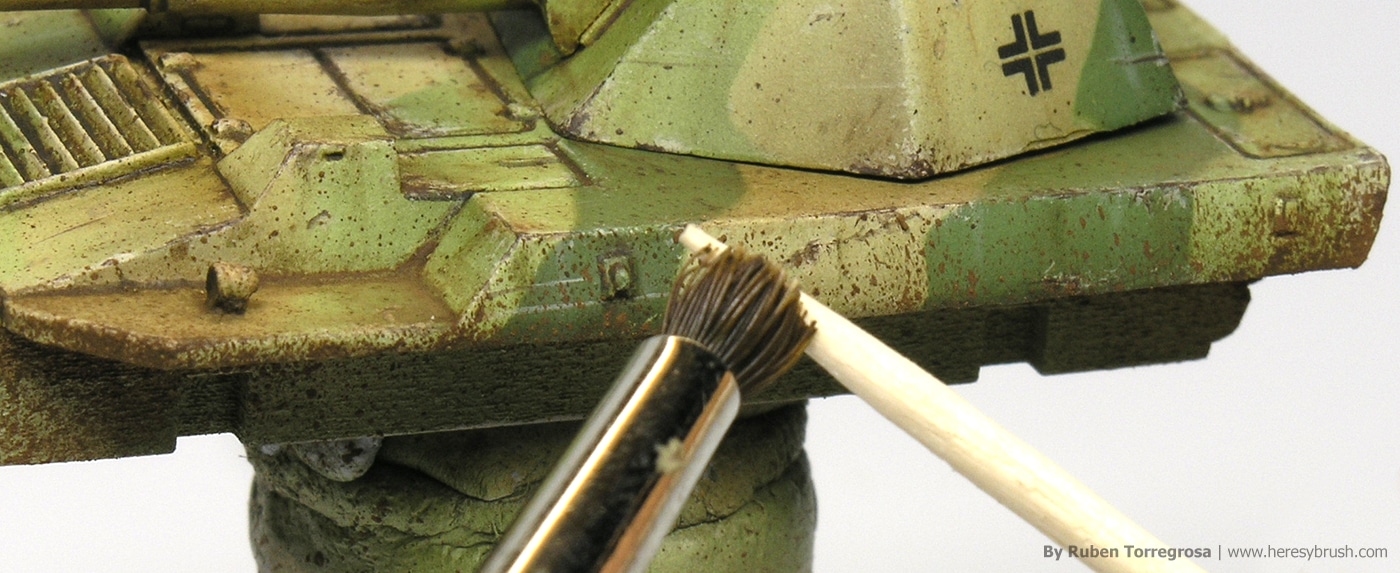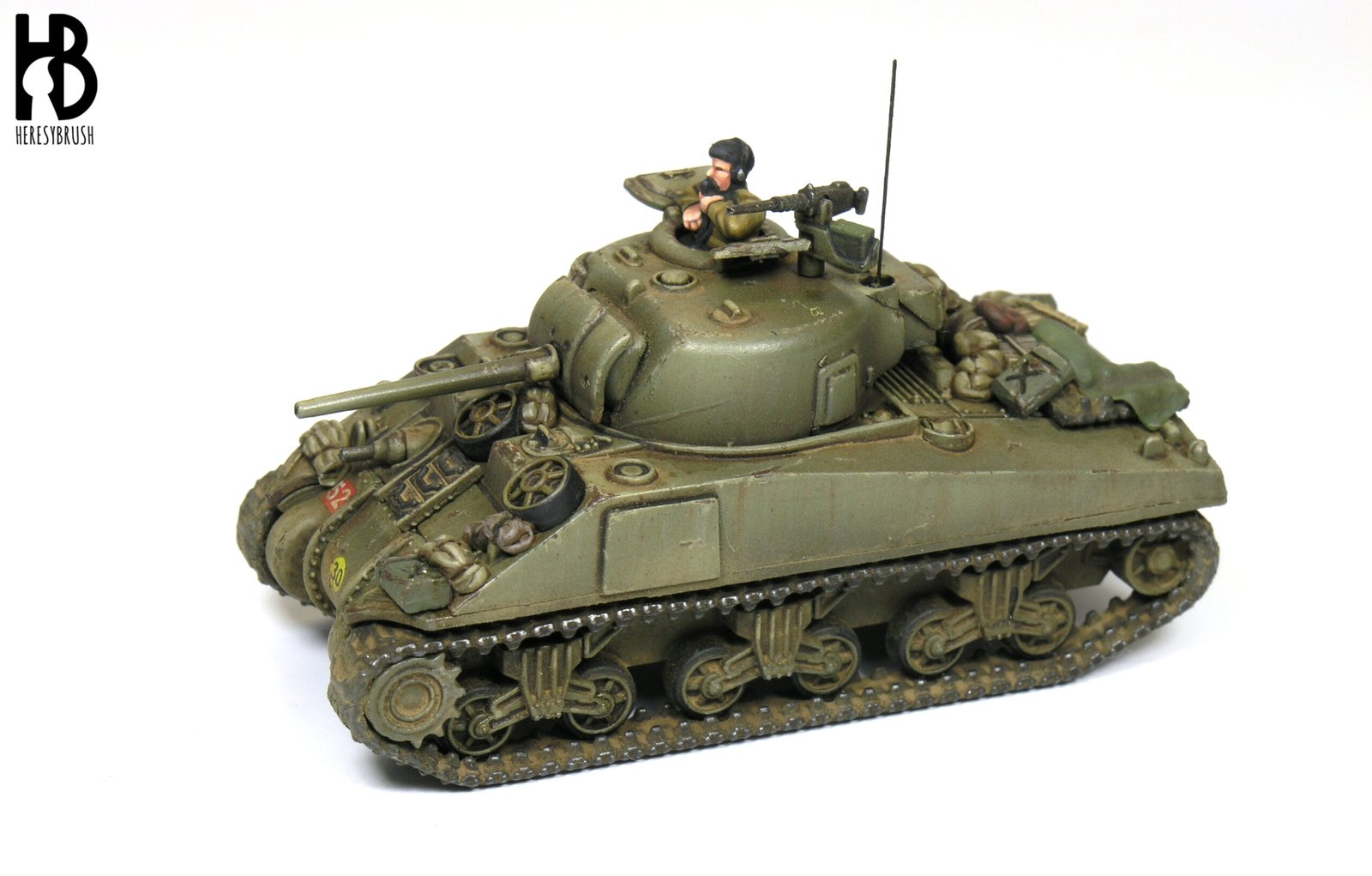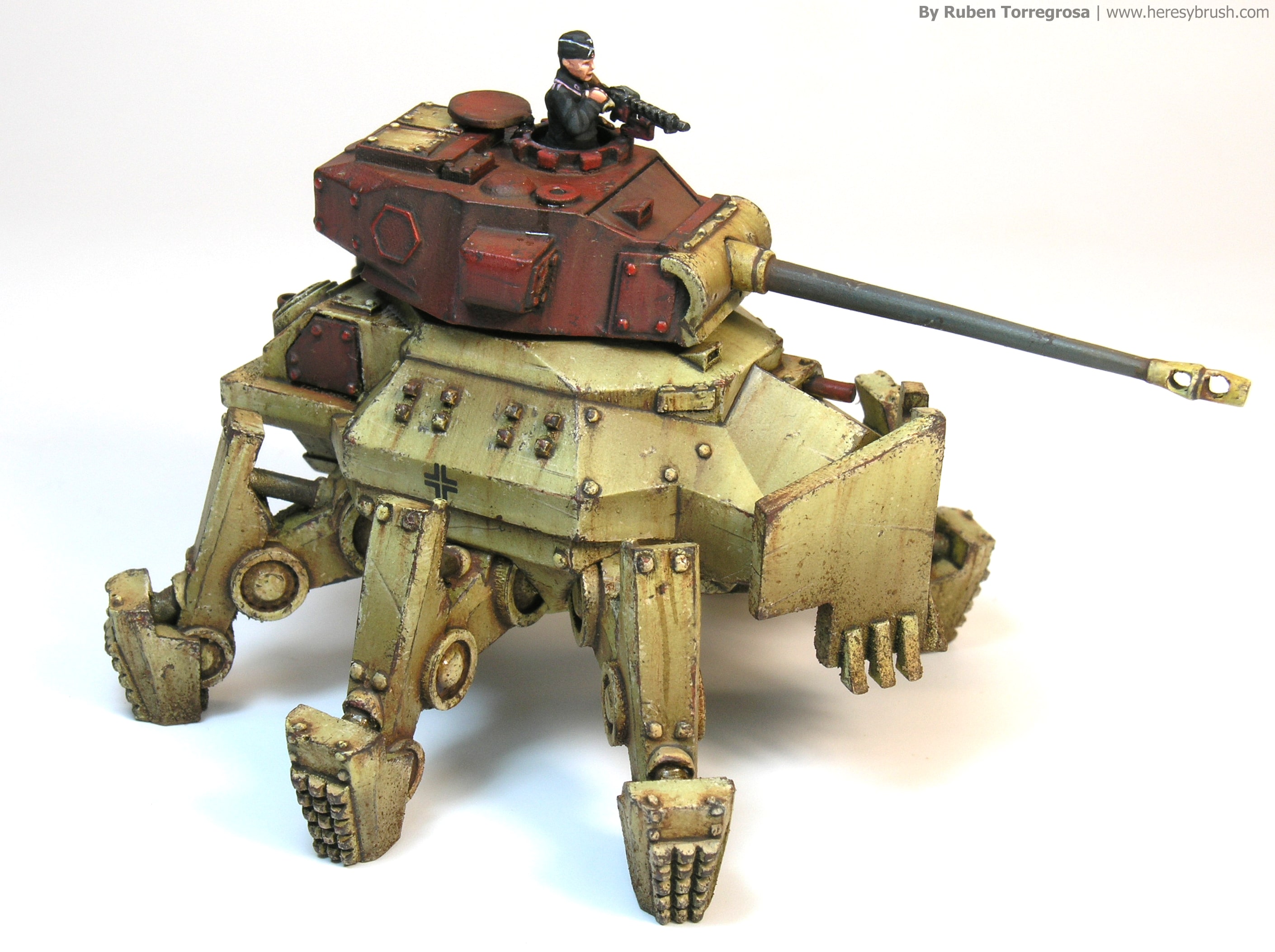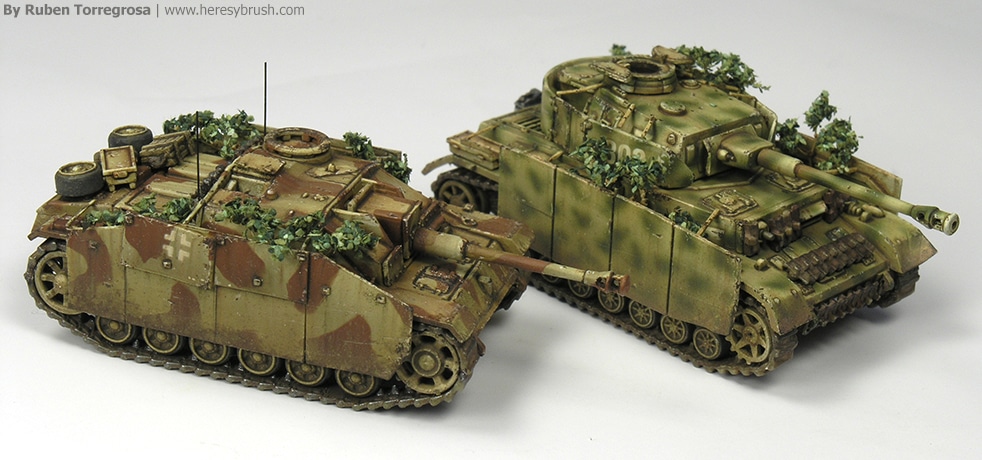After several years of wanting to start painting a Horus Heresy Legion army, I finally had the chance to do it. I chose the Night Lords, a Legion that is perhaps a bit underrepresented compared to others but features a beautiful color scheme and rich lore. I finished painting the first squad and decided to write a tutorial using the last miniature. Instead of the official painting scheme, which is very dark blue often with lightning on the armor, I opted for a desaturated and slightly greenish blue inspired by some great painters such as @loyalistareboring and @Maybug_Games on Instagram.…
How to paint tanks using the drybrush and oils
In this tutorial, we will explore techniques for enhancing a basic paint job using oil paints. Unlike acrylics, oil paints require an organic solvent like White Spirit or turpentine (which is toxic, such as Enamel Odourless Thinner A.MIG-2019) instead of water; and take hours to dry, as opposed to mere seconds with acrylics. However, this extended drying time lends oils the advantage of effortless blending, allowing for the creation of multiple effects. For instance, we can employ this property to generate shadows, thereby enhancing the sense of volume, or to simulate various weathering effects such as dirt or dust accumulation.…
Mud splatter effects in 15mm
While I am working on different projects, such as the new PaintingWar book focused on the Spanish Civil War, I have no time to prepare any tutorial for my blog. It is a pity. Nonetheless, you can follow my work in www.ModelBrush.com, a blog which I run with some friends. Strikingly, I have found an abandoned painting guide in my computer (that is, unpublished) and I would like to exploit it, starting by this “mud splatter effects in 15mm” tutorial. A very simple but very effective weathering effect. I have already commented this effect several time in my blog, but…
Spanish Civil War – How to paint a Spanish rural house
My last post was four months ago. Apologies. I’m still alive in the north! Indeed now I can say that I’ve seen the northern lights. I’ve achieved one of my dreams! Anyway, I have been painting a lot during this time. Different projects have occupied my free time. And probably the most important one is a new PaintingWar magazine focused on the Spanish Civil War (it has just released the issue 3 about the WWII US and Japanese armies, yopu can see here). The painting work and texts have been already sent, so in the following months it should be…
How to paint a British Sherman tank, and a new book: Painting Wargame Tanks
It’s a great pleasure to announce a new book published by AMMO of Mig Jimenez where I have actively been collaborating beside Mig Jimenez and Carlos Cuesta. The book contains 96 pages. After a short introduction about general materials and techniques (differences between acrylics and enamels, what is a filter or a wash, how to clean the airbrush…) you can find ten complete painting guides “step by step” of different tanks (mostly Germans, but there are also from USA and Soviet Union). The three firsts pretend to assimilate the knowledge showed in the introduction (we can say “basic level”), while…
How to paint 15mm tanks: German spider mech
While I am learning new hobbies (and sports) in this lovely Finish land, such as ice swimming, ice hockey or cross-country ski, I had enough time to paint and prepare a painting guide featuring an interesting Panzermech from ClockWork Goblin miniatures. I love this theme! In the past, I painted a couple of walkers from DreamPod9, and I currently attempt to paint as many E-series tanks as I can from Forged in Battle or Heer46. All in 1/100 scale or 15mm, of course!, my preferred scale. In this occasion, I’ve prepared a complete painting guide. However, I want to notice…
Weathering on horizontal panels in 15mm tanks
It’s very common to observe impressive streaking effects on vertical surfaces in Flames of War vehicles. However, we can’t apply the same effect on horizontal panels, because the gravity result is different, obviously. Here, I want to explain different ways or tools to work the horizontal panels. In vertical surfaces enamels and oils are usually used in this way: first we paint dots or vertical stripes with different colors. And then we blend all colors using a brush moistened in white spirit, by applying vertical strokes. The result are interesting vertical streaks. But these are illogical on a horizontal surface!.…

